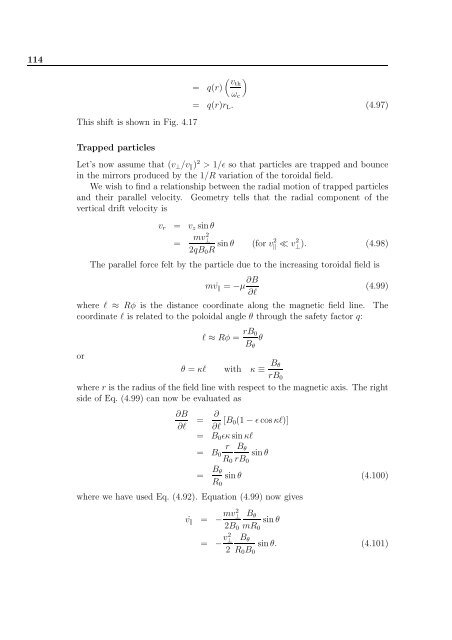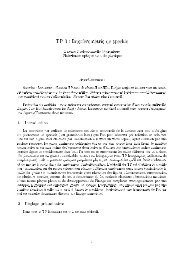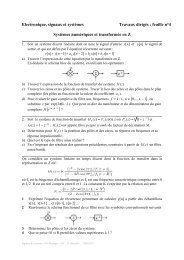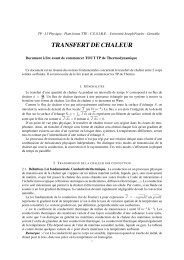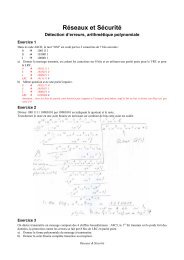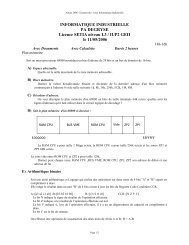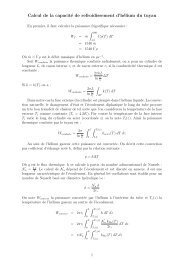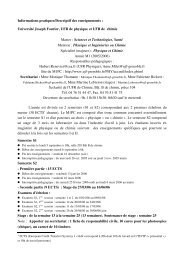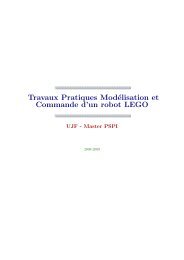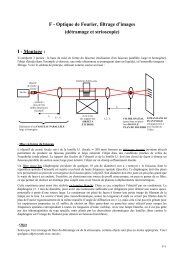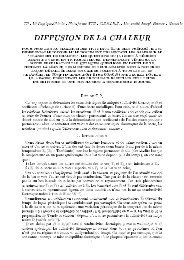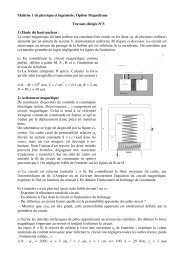Chapter 4 SINGLE PARTICLE MOTIONS 4.1 Introduction
Chapter 4 SINGLE PARTICLE MOTIONS 4.1 Introduction
Chapter 4 SINGLE PARTICLE MOTIONS 4.1 Introduction
You also want an ePaper? Increase the reach of your titles
YUMPU automatically turns print PDFs into web optimized ePapers that Google loves.
114This shift is shown in Fig. <strong>4.1</strong>7=( ) vthq(r)ω c= q(r)r L . (4.97)Trapped particlesLet’s now assume that (v ⊥ /v ‖ ) 2 > 1/ɛ so that particles are trapped and bouncein the mirrors produced by the 1/R variation of the toroidal field.We wish to find a relationship between the radial motion of trapped particlesand their parallel velocity. Geometry tells that the radial component of thevertical drift velocity isv r = v z sin θ= mv2 ⊥2qB 0 R sin θ (for v2 ‖ ≪ v⊥). 2 (4.98)The parallel force felt by the particle due to the increasing toroidal field ismv ˙ ‖ = −µ ∂B∂l(4.99)where l ≈ Rφ is the distance coordinate along the magnetic field line. Thecoordinate l is related to the poloidal angle θ through the safety factor q:l ≈ Rφ = rB 0θB θorθ = κl with κ ≡ B θrB 0where r is the radius of the field line with respect to the magnetic axis. The rightside of Eq. (4.99) can now be evaluated as∂B∂l= ∂ ∂l [B 0(1 − ɛ cos κl)]= B 0 ɛκ sin κl=r B θB 0 sin θR 0 rB 0= B θsin θR 0(<strong>4.1</strong>00)where we have used Eq. (4.92). Equation (4.99) now givesv ˙ ‖ = − mv2 ⊥2B 0= − v2 ⊥2B θsin θmR 0B θsin θ. (<strong>4.1</strong>01)R 0 B 0


